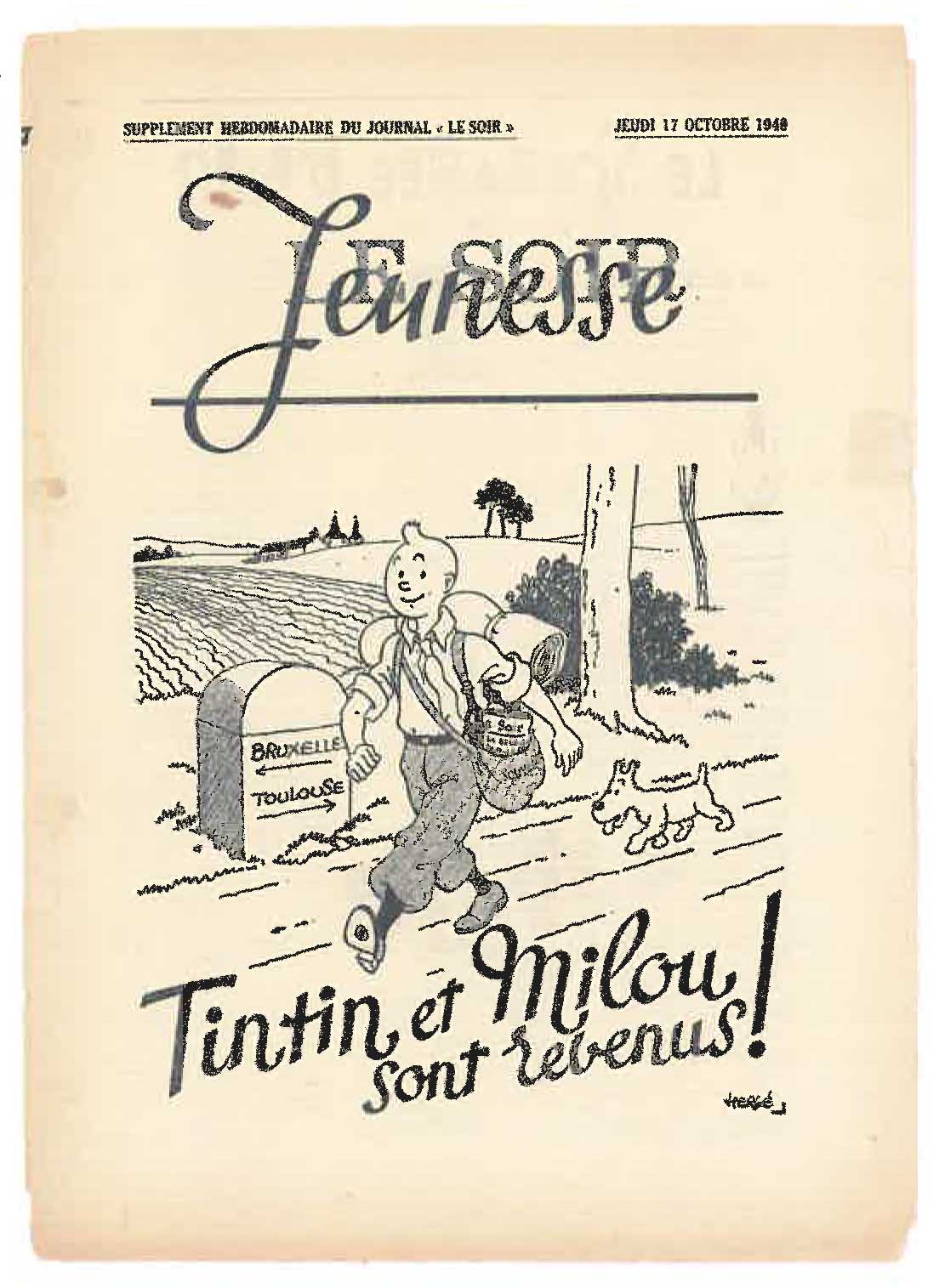One Date, One Adventure
It is October 17, 1940. A heavy autumn hangs over the Low Countries, weighed down by a terrible ordeal. Yet behind the anxious, pale faces, a familiar smile reappears… Tintin’s. On Brussels newsstands, the very first issue of Le Soir Jeunesse appears, a supplement to the daily newspaper Le Soir… now under German control.
A few months earlier, Le Petit Vingtième had ceased publication, its final issue dated May 9, 1940, on the eve of the invasion of Belgium, bringing to a halt the ongoing serialization of Tintin in the Land of Black Gold. For Hergé, it was a shock worthy of one of Rastapopoulos’s worst schemes: his hero, born in 1929 in the Catholic supplement Le Vingtième Siècle, no longer had a platform.
Exile in Auvergne
At the time of the invasion, Hergé’s brother Paul was taken prisoner, and Hergé decided to flee Belgium with his wife, Germaine.
Driving their Opel Olympia, they set out for France and found refuge in Auvergne, at the invitation of his friend Jacques Dumas, better known as the cartoonist Marijac, future creator of Jim Boum. On May 22, 1940, they arrived in Saint-Germain-Lembron, and soon settled in Collanges, a small village in the Lembron region of the Puy-de-Dôme.
Hergé led a quiet, modest life there for about a month.
According to local recollections, he fetched milk from nearby farms, chatted in the village café, and occasionally sketched for children on scraps of paper. Those who remembered him described a polite, reserved man, seeking only peace and quiet.
On June 28, 1940, he returned home, to a Belgium now under occupation. What’s going to happen next ?
The Return of Tintin
Back in Brussels, Hergé had to start over. The new director of Le Soir, Raymond De Becker, invited him to create a youth supplement for the newspaper. Hergé agreed, seeing it as a way to keep Tintin alive while steering clear of political involvement.
Thus was born Le Soir Jeunesse, whose first issue, published on October 17, 1940, marked the triumphant return of the quiffed reporter, with a brand-new adventure: The Crab with the Golden Claws.

On the cover, Tintin appears smiling, a bundle slung over his shoulder, returning to Belgium after a long absence.
But one curious detail stands out: on a milestone by the roadside, the word “Toulouse” is clearly visible.
This was perhaps no coincidence.
Just months earlier, tens of thousands of young Belgians had been sent to southwestern France to join the C.R.A.B. – the Centres de Recrutement de l’Armée Belge – (Recruitment Centers of the Belgian Army) whose headquarters were based in Toulouse, the main rallying point for these exiled soldiers.
Some have seen in this a subtle tribute to those uprooted young men, forced into exile and then back home again, often on foot, their soles worn thin… much like Tintin on the drawing itself. Hergé, it seems, had lost none of his legendary eye for detail.
A Brief Editorial Adventure
Le Soir Jeunesse followed the layout of Le Petit Vingtième: eight folded pages mixing comics (Tintin, Quick and Flupke), stories, and short features. But war and paper shortages soon took their toll.
By the spring of 1941, the supplement had been reduced to half a page. Its final issue appeared in September 1941.
Hergé would then continue The Crab with the Golden Claws directly in Le Soir, in the form of daily comic strips.
A brief interlude in Hergé’s career, Le Soir Jeunesse remains essential nonetheless. It marked Tintin’s return after the turmoil of war, introduced Captain Haddock, and stands as a testament to the perseverance of an artist who, even amid occupation, continued to believe in the power of storytelling and drawing.

Texts and pictures © Hergé / Tintinimaginatio - 2025




 News
News Forums
Forums E-books
E-books

